- News
- Reviews
- Bikes
- Accessories
- Accessories - misc
- Computer mounts
- Bags
- Bar ends
- Bike bags & cases
- Bottle cages
- Bottles
- Cameras
- Car racks
- Child seats
- Computers
- Glasses
- GPS units
- Helmets
- Lights - front
- Lights - rear
- Lights - sets
- Locks
- Mirrors
- Mudguards
- Racks
- Pumps & CO2 inflators
- Puncture kits
- Reflectives
- Smart watches
- Stands and racks
- Trailers
- Clothing
- Components
- Bar tape & grips
- Bottom brackets
- Brake & gear cables
- Brake & STI levers
- Brake pads & spares
- Brakes
- Cassettes & freewheels
- Chains
- Chainsets & chainrings
- Derailleurs - front
- Derailleurs - rear
- Forks
- Gear levers & shifters
- Groupsets
- Handlebars & extensions
- Headsets
- Hubs
- Inner tubes
- Pedals
- Quick releases & skewers
- Saddles
- Seatposts
- Stems
- Wheels
- Tyres
- Health, fitness and nutrition
- Tools and workshop
- Miscellaneous
- Cross country mountain bikes
- Tubeless valves
- Buyers Guides
- Features
- Forum
- Recommends
- Podcast
review
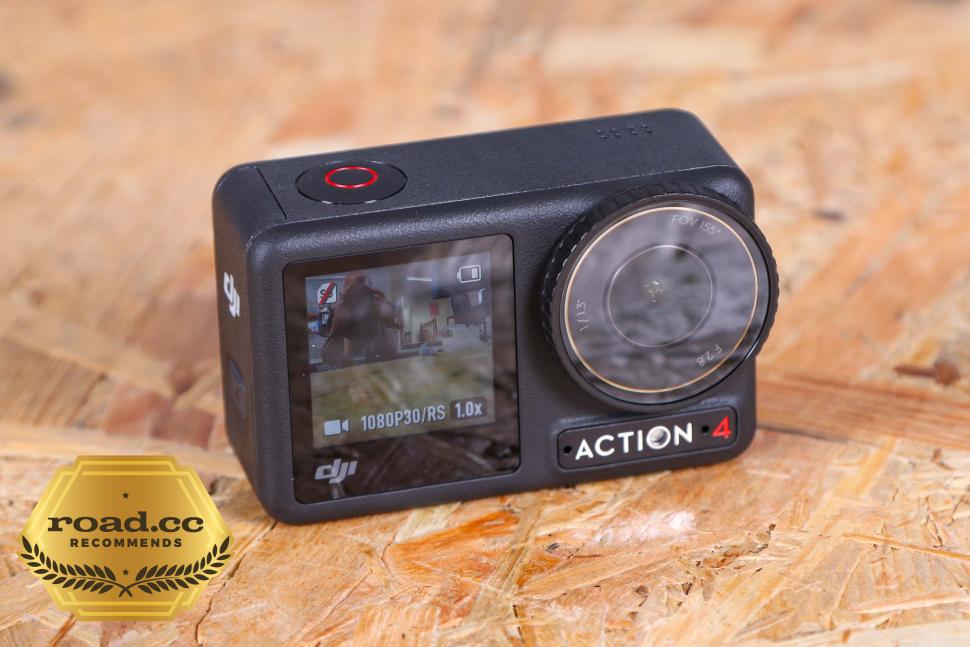 DJI Osmo Action 4 Adventure Combo
DJI Osmo Action 4 Adventure Combo£469.00
VERDICT:
One of, if not the best action cameras currently available
Best in class image
Second best in stabilisation
Intuitive controls
Best in class mounting system
Excellent range of accessories
A really fun camera
Editing videos on mobile devices is not ideal
Separate GPS unit
All the fun accessories really add up in price
Weight:
146g
Contact:

This product has been selected to feature in road.cc recommends. That means it's not just scored well, but we think it stands out as special. Go to road.cc recommends
At road.cc every product is thoroughly tested for as long as it takes to get a proper insight into how well it works. Our reviewers are experienced cyclists that we trust to be objective. While we strive to ensure that opinions expressed are backed up by facts, reviews are by their nature an informed opinion, not a definitive verdict. We don't intentionally try to break anything (except locks) but we do try to look for weak points in any design. The overall score is not just an average of the other scores: it reflects both a product's function and value – with value determined by how a product compares with items of similar spec, quality, and price.
What the road.cc scores meanGood scores are more common than bad, because fortunately good products are more common than bad.
- Exceptional
- Excellent
- Very Good
- Good
- Quite good
- Average
- Not so good
- Poor
- Bad
- Appalling
On seeing the DJI Osmo Action 4 strapped to my bike, a friend remarked, "Ah, you've got a new GoPro." Like Hoover, and Walkman, where the brand name became interchangeable with the type of device, GoPro basically created and has defined the action camera market, so it's both a pity and completely understandable that we can't really talk about an action camera without name-checking DJI's biggest rival. Personally, I always found versions 1 and particularly 2 of the DJI Osmo were out-paced, out-stabilised, and generally out-performed by their GoPro counterparts, who were already on version 9 or 10. So does the version 4 Osmo finally get one over on its biggest rival? Short answer – to my surprise and delight – yes, it does.
So, disclaimer: DJI sent us the Osmo Action 3 (below) and the Action 4 to review, and for better or worse, having used them both, I found so little difference between them that separate reviews just aren't warranted. I suspect that's for the better as I rather love the Osmo 4. So let me get the differences out of the way, and then everything thereafter can be applied to them both.
The Osmo Action 3 (currently reduced from £309 to £259) came out last year – almost exactly a year ago, in fact – and the new Osmo Action 4 is both a minor, but useful, update.
Updates
The biggest difference is the sensor inside. In the 3, it's a 1/1.7-inch CMOS sensor, and in the 4 it's slightly larger at 1/1.3 inches. In bright sunshine with bags of light, there's no discernible difference in footage quality, but when the light gets sparse, the larger sensor of the 4 gathers more of it, and consequently produces nicer, sharper, less grainy and less noisy images.
In the Osmo 4, you can now adjust the level of sharpening and noise reduction, which was baked into the 3. The 4 also now supports gyro data exportation, which means you can use more powerful dedicated programs to stabilise the footage in post production. This gives more granular tweaking abilities for those who want ultimate manual control. (This is sort of the stabilisation equivalent of a photographic RAW file, allowing you access to the raw gyro/stabilisation data.)
The 4 now integrates with its GPS Bluetooth remote, which means you can overlay telemetry stats on your footage – things like real-time speed, distance covered, your route, heading, inclination (slope angle) and g-forces experienced (!).
Finally, the 4 has better selfie-stick elimination scenarios. But that's really it.
All the same
From here on in, the 3 and the 4 are functionally identical, and I liked them both very much. The software on the devices is very intuitive, and the touchscreen is fast and responsive.
In daylight the footage I got from both was great, and I think superior to even the GoPro Hero12 which was recently released. (It's a thin margin, but the larger sensor of the DJI (4) pays off here.)
The quality and frame-rate at which they can both record is up to 4K/120 for buttery smooth slow motion at the 16:9 aspect ratio. This is in HDR, 10 bit, at up to 130Mbps data rate. (You can watch the above sample footage on YouTube at up to 4K, if you want to see it in hi-res.)
They shoot up to a max aperture of 2.8, with a Field of View (FOV) of 155 degrees. This is the equivalent of about an 11mm lens on a 35mm camera if you think like that. It's very, very wide angle.
They both use the same 1,770 mAh battery (good for about 160 minutes of recording, though this varies quite a lot with temperature conditions, GPS usage, screen usage and so on).
They're both highly temperature ambivalent, operating from -20 to +45°C, and are both very waterproof, down to 16m (on the 3) and 18m on the 4. That's straight out of the box, too, without a case.
Problems solved
In use, you can tell this is an iterated product; DJI has clearly thought about, and solved lots of problems.
For example, for those times when you can't reach your camera to start/stop it, you can turn on voice activation. It worked really well – I was able to shout at it to 'Start recording' and was greeted with a confirming chime to let me know it had heard me and obeyed.
The Rock Steady stabilisation is excellent; I was hitting bumps and potholes at 40kph and the camera sorted it all out. You can barely tell from the footage, it's remarkable. We've all seen iPhones and the like steady our walking, but this level of stabilisation is something different and very impressive. (I was able to watch a little side by side footage of the Osmo 4 and the GoPro Hero12, and though I think the image quality is better on the Osmo, the stabilisation is fractionally better on the GoPro, but again the margin is small.)
One of the remarkable things about action cameras is actually all the interesting places people are coming up with to put them. Strapping them to pets and children is amazing. Cars, bikes and planes of course give a real sense of speed, but people are incredibly inventive, and the cameras' small size means they're easily thrown or launched and fit inside some unlikely places.
My favourite use was actually not to record my experience of a ride, but to strap it to my back and record my young son's permanent grin as he hit the bumps on the back of my bike. Though the camera is no more than 30cm from his face, he's framed perfectly, and it's all joy that I miss not being able to see him, and his reactions and excitement.
In fact, as you can see the landscape whizz by in the background anyway, I've quickly found this footage is way more interesting than the trail in front of us. That said, with two cameras, it only takes very rudimentary editing skills acquired in an hour or two to cut seamlessly between them.
I was impressed by the microphones in the camera too; even sheltered behind me, I can barely hear or make out the orders to go faster my son is shouting at me, but the camera captures every syllable surprisingly clearly. The three in-built microphones all but eliminate wind noise in a very impressive manner.
Accessories
Buying into the DJI ecosystem gives you access to a huge range of accessories that dramatically ups the usability – and fun – of the camera. I won't go into all the clever and rather self-explanatory mounts, but here are a couple of extras that are fantastic.
1. Top of my list for adrenaline junkies is the Bluetooth GPS Remote Control. This device straps to your wrist or handlebar, and not only starts/stops the recording if the camera's out of reach, but it adds GPS data 10 times per second. This means in post production, you can use the DJI app to overlay all the fun metrics like speed and g-forces. It also allows you to remotely trigger multiple Osmos simultaneously.
2. I got a decent amount of run-time out of the battery – an hour and a quarter nearly – with all the stabilisation on, the highest bitrate, and ingesting the GPS data. If you need more, DJI's battery case is brilliant. Not only does it store three batteries and charge them simultaneously via a single USB-C, but in times of need, the power can flow the other way. I was able to recharge my iPhone from the battery pack. Nifty.
Memory cards
The cameras take Micro SD memory cards, and these can be had very cheaply these days, which is great, as neither camera comes with one.
The Osmo 3 can accommodate capacities up to 256GB, and the 4 can take up to 512GB. With top quality footage requiring 120Mbs (about 900MB per minute), you quickly eat through storage. For reliability and speed, I always use these Delkin Devices cards. And they come with a lifetime warranty.
Other bits of brilliance
DJI's Mimo app is the editing hub and repository of all your footage. It, too, is rather good. It's intuitive, very responsive, and powerful. From here, you can edit the footage, and make use of its clever tricks.
The InvisiStick feature removes the 'selfie-stick' from footage, and it is effective. It looks better than footage of you waving around a massive selfie stick, but your hand appears to be clutching 'nothing' in edited footage, sort of like you're holding an imaginary lightsaber.
Connection between the app and the camera is a real highlight. The app quickly detects the camera as you turn it on, and the camera creates an ad-hoc Wi-Fi connection to your phone, and shoots the footage over to it. In the past, on other devices, I've found this to be laborious and hit or miss. On the DJI it was rock-steady, simple and surprisingly fast – I clocked it at about 30MB/s (240Mb/s), but that'll depend on your phone.
Additionally, this turns your phone into a wireless monitor with full recording control of the camera, and again I was impressed by the minimal screen lag.
However, to move large amounts of footage you're better off connecting via USB-C to a computer, and this also enables you to use the Osmo 4 as a 4k webcam which really felt like a 'bonus feature'.
Stabilisation modes
In addition to Rock Steady, and Rock Steady +, the camera has a Horizon Balancing setting. This is particularly good for cyclists. It keeps the horizon flat and locked in your field of view, and will keep things level with up to 45 degrees of swing/tilt each way. This really makes cycling footage look smooth, regardless of how you're throwing the bike around, or the surface you're on.
> 10 tips for submitting good quality camera evidence to police
The camera is very fast to boot up, really only a second or two. And if you see something you need to capture urgently, you can just press the shutter button from power-off, and it will turn on and start recording immediately.
Best 'til last: Magnetic mount
I wish I'd bought shares in magnets. Everyone's using them for all the cool stuff these days, and DJI is no exception. The magnetic mount to the camera is terrific. The strong magnets mean the base mount and camera suck themselves together in perfect alignment. With a bit of a push, you're greeted with a reassuring 'click' as the mount's 'teeth' grip into the camera body. This makes it very secure, and I suspect some metal would really have to break or sheer off for the camera to detach.
And despite all this, removing it is simple: press the bottom of the clips and the camera is released easily. This makes moving/mounting/unmounting the camera a half-second job.
The not-so-good
Only two points here. The first is the wireless Bluetooth remote. I liked it a lot; having start/stop control on your wrist is great, and the GPS data enabling speed and g-force overlays is awesome! That said, it's a separately purchasable product (around £70!) and a GPS unit is integrated into other cameras. Ahem, GoPro (the Hero11, although the 12 has now ditched built-in GPS too).
The second is the lack of desktop app. The mobile app is great, but it's mobile phone only, there is no desktop version. Please, please fix this, DJI.
The only way to get the overlay telemetry data onto the footage is via the app, and editing even a short 4K/120p 10-minute file on a mobile phone is ridiculously processor intensive. My admittedly long-in-the-tooth iPhone X took 40 seconds to overlay the telemetry on a 20-second 30fps clip, and crashed repeatedly when I asked it to do this to a 9-minute 8GB file. On a faster/newer phone, I'm sure this is quicker, but still.
My three-year-old computer is still 40 or 50 times faster than my iPhone, and has a graphics card and a proper dedicated video editing app. I could find no way to overlay the telemetry other than in-app. Then I had to get the footage off my iPhone, and even the wired connection from iPhone to computer is way slower than the USB-C connection from the Osmo to my computer. (I believe there are expensive/cumbersome third-party apps to do this, but come on, DJI.)
Value and conclusions
The camera itself is £379, which is okay. Ish. But the fun stuff/accessories are pretty steep: the £469 for the Adventure Combo (selfie stick, spare batteries, and battery 'pack') is practically obligatory, then the handlebar mount is £35, and the Bluetooth/GPS unit is another £70. And that's before you've bought a memory card. All of a sudden, £379 can quickly become nearly £600 plus memory card... Ouch.
You can save £70 if you go for the Osmo 3 (even more at the moment as DJI has it reduced to £259). If you shoot in exclusively bright sunlight, and don't need telemetry data, and don't need post-processing gyro data, the 3 is great, and footage-wise indistinguishable.
I'm addicted to the g-force data, though, and long to take the Osmo 4 skiing...
As I said at the outset, it's all but impossible to talk about the Osmo without mentioning the GoPro Hero12 too. By the time you've bought a camera, perhaps a bundle and other accessories, the price of the Osmo 4 and Hero12 are virtually identical. The Hero12 is a little more expensive as a base camera, £399.99. Some Osmo accessories are a little cheaper, some are a little more expensive than corresponding GoPros, and it all sort of evens itself out. Certainly, the price/value is so close that I can't see it being the deciding factor between them. Far more likely is that you'll be swayed by the marginally better stabilisation of the GoPro, or the marginally better picture quality of the Osmo, or the easier vertical shooting (editing after the event) option of the GoPro, or the superior water resistance of the Osmo, or the GoPro's ability to connect to AirPods, or the Osmo's lowlight performance and small size... You get the picture. Literally.
Personally, I'll take the Osmo all day over the GoPro because it ticks more boxes for me. Yes, it would be nice to have GPS built in, and yes I'm crying out for a desktop app. But the camera is smaller, the sensor is bigger, the mounts are better, and the footage to my eye is superior.
Bonus tip... I get all my camera gear at Wex Photographic. It's got an unrivalled range and inventory, including GoPros and Osmos, and, most importantly, it'll take your old photo gear in trade-in for new and shiny toys, which always mitigates the guilt at my 'need' for new kit...
Verdict
One of, if not the best action cameras currently available
road.cc test report
Make and model: DJI Osmo Action 4 Adventure Combo
Size tested: One Size
Tell us what the product is for and who it's aimed at. What do the manufacturers say about it? How does that compare to your own feelings about it?
DJI says: "Capture the raw exhilaration of any moment with striking image quality and unmatched flexibility, even when the lights dim. Osmo Action 4 empowers thrill-seekers to record it all, share the rush, and set the tone."
Action cams are for everyone, not just cyclists. Due to their small size and versatile mounting options, people are putting them in incredible places and getting novel perspectives on their 'action' and the world at large. Strap it to a pet, a child, a vehicle, a plane, a football, yourself, or of course a bike. The limit really is your imagination, and all the best stuff I've shot with the Osmo has been as a result of putting it in interesting places.
And 4K/120 is brilliant and really smooth for showing off your most epic exploits.
Tell us some more about the technical aspects of the product?
DJI lists these specs:
70.5x44.2x32.8 mm (LxWxH)
Weight: 145 g
Waterproof: 18 m without the Waterproof Case, 60 m with the Waterproof Case
Touchscreens
Front Screen: 1.4-inch 323 ppi 320x320
Rear Screen: 2.25-inch 326 ppi 360x640
Front/Rear Screen Brightness: 75050 cd/m
FOV: 155°
Aperture: f/2.8
Focus Range: 0.4 m to ∞
Frame Rates:
4K (4:3): 3840x2880@24/25/30/48/50/60fps
4K (16:9): 3840x2160@100/120fps
4K (16:9): 3840x2160@24/25/30/48/50/60fps
2.7K (4:3): 2688x2016@24/25/30/48/50/60fps
2.7K (16:9): 2688x1512@100/120fps
2.7K (16:9): 2688x1512@24/25/30/48/50/60fps
1080p (16:9): 1920x1080@100/120/200/240fps
1080p (16:9): 1920x1080@24/25/30/48/50/60fps
Slow Motion
4K: 4x (120fps)
2.7K: 4x (120fps)
1080p: 8x (240fps), 4x (120fps)
Hyperlapse
4K/2.7K/1080p: Auto/x2/x5/x10/x15/x30
Timelapse
4K/2.7K/1080p@30fps
Intervals: 0.5/1/2/3/4/5/6/8/10/15/20/25/30/40 s
Duration: 5/10/20/30 mins, 1/2/3/5 hours, ∞
Stabilization
EIS:
RockSteady 3.0
RockSteady 3.0+
HorizonBalancing
HorizonSteady
Rate the product for quality of construction:
9/10
It's sturdy, solid, and obviously very well sealed against water.
Rate the product for performance:
9/10
Best 4K footage I've seen on an action camera.
Rate the product for durability:
9/10
Seems incredibly robust.
Comes with a frame for added ruggedness, but I didn't feel the need to use it, and didn't use a case either.
I've dropped it a couple of times (totally meant to do it...) and there's not a mark.
Rate the product for weight (if applicable)
8/10
145g, and slips unobtrusively into a pocket or a bag.
A slightly smaller form factor than GoPro.
Rate the product for value:
5/10
Comparable give or take a little to GoPro, but the price really starts to shoot up when you start adding accessories.
Tell us how the product performed overall when used for its designed purpose
It's brilliant. The only downside is getting telemetry onto the footage via the mobile app, and the lack of desktop app.
Tell us what you particularly liked about the product
Footage quality is first rate.
User interface is fast and intuitive.
Plethora of well-thought-out accessories and mounts available.
Best available mounting system.
Tell us what you particularly disliked about the product
No desktop app.
Pricey accessories.
How does the price compare to that of similar products in the market, including ones recently tested on road.cc?
The Osmo 3 is £309. If you're never going to need real-time telemetry overlays, and never going to shoot at dusk, this is great value.
For me, though, the speed overlays are addictive and a must-have, especially for things like kite-surfing, skiing, and biking where speed is part of the thrill, so the extra £70 for the Osmo 4 is worth it. That said, to actually get the speed on the footage, not only will it cost you £70 more for the Osmo 4 over the 3, but another £70 to buy the GPS device. There are plenty of Osmo bundles available, at least 10, that incorporate different accessories and save you a little money. However, none of them include the GPS module, so this is always a £70 extra.
Compared to the GoPro Hero12, the Osmo 4 is £20 cheaper. Apples to apples comparisons between the two is a little tricky, because there are so many options, and GoPro has bundles too. In terms of accessories, some GoPro accessories are a little more expensive (£5 more for a mount, £5 more for a battery, £10 more for bluetooth remote) and sometimes Osmo's are more expensive (£5 more for the Underwater case). By the time you've bought a bundle and some other accessories, the prices are within slim margins one way or another.
Did you enjoy using the product? Very much.
Would you consider buying the product? Yes
Would you recommend the product to a friend? Yes
Use this box to explain your overall score
All very impressive. Largely pain-free and pleasurable experience, and great footage.
About the tester
Tom is features and tech writer who's been writing and riding for over 20 years, and has had misadventures on almost every conceivable bike. From single-speeds, to aero race-bikes, gravel bikes, ebikes and mountain bikes, he's a big fan of almost everything that rolls on two wheels.
Latest Comments
- Born_peddling 1 hour 54 min ago
Similar incident happened to another couple that was in the news early last year, instead of it being a cycle rack this person concealed themselves...
- David9694 1 hour 59 min ago
A fierce row at the heart of Reform UK - what's going on?...
- David9694 2 hours 4 min ago
Even if the guy gets this a lot, it's still worth my being the 940th person to note that it's Cllr De'Ath overseeing a whopping four roads in...
- don simon fbpe 2 hours 12 min ago
Either way, got to be better than being a professional prick.
- Rendel Harris 4 hours 4 min ago
It was a bit more complex than that I think, the Badger had already been suffering from tendonitis for quite some time before (many said due to his...
- quiff 3 hours 15 min ago
That's going to make life needlessly difficult when I want to (perfectly legitimately) filter through traffic or indeed get through my front door...
- Bmblbzzz 5 hours 48 min ago
Where are Zebedee and Ermintrude when you want them?
- Steve K 6 hours 1 min ago
Update on this: apparently it's all their Ti frames ever, except the HT Ti (no, no idea why). However, it's not transferable.
- Oldfatgit 6 hours 34 min ago
Cough *plotaroute.com*
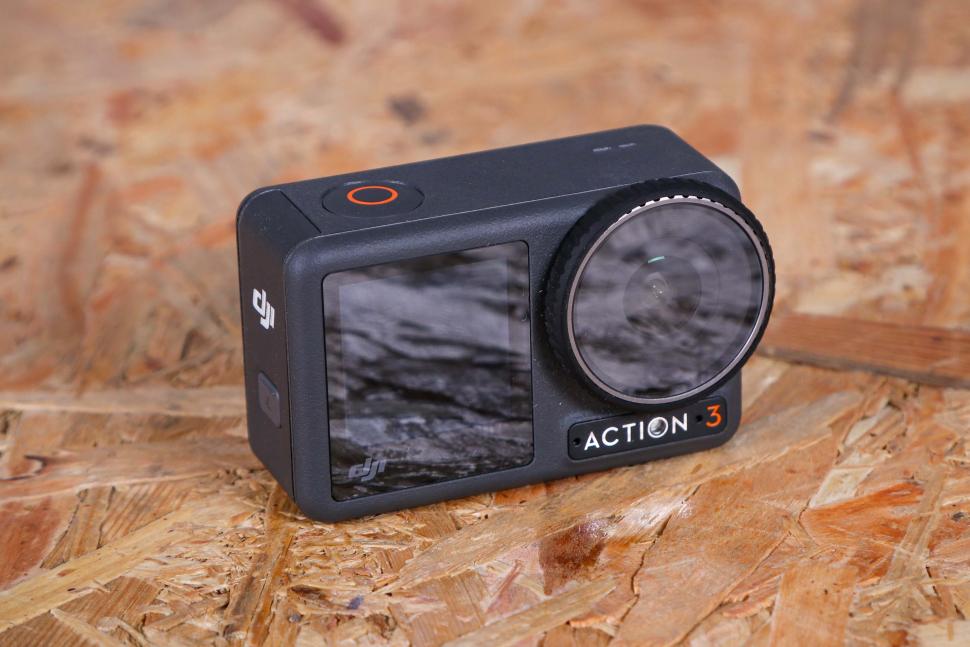
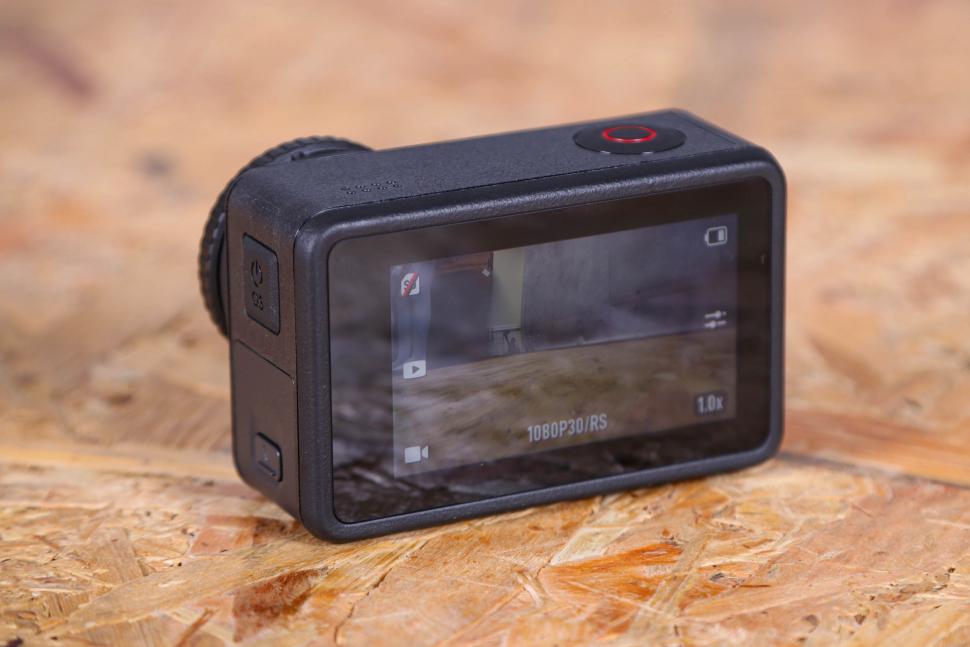

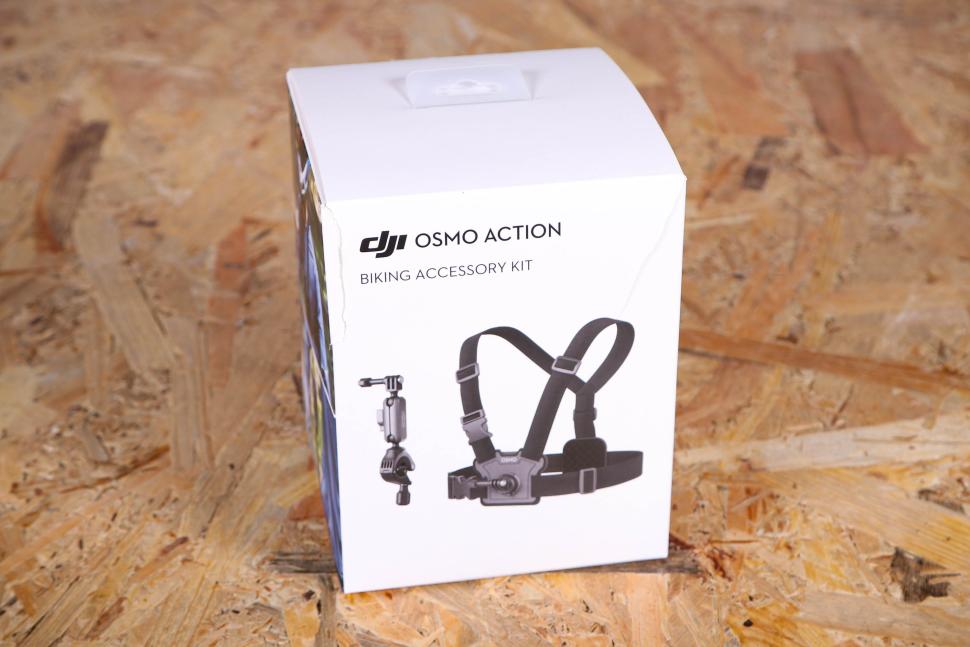




























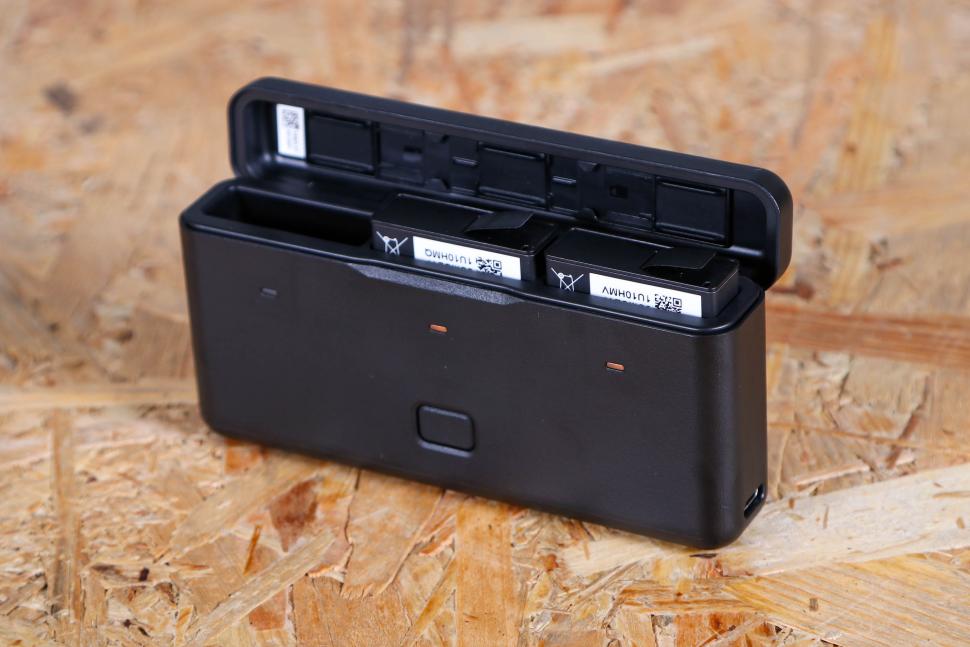

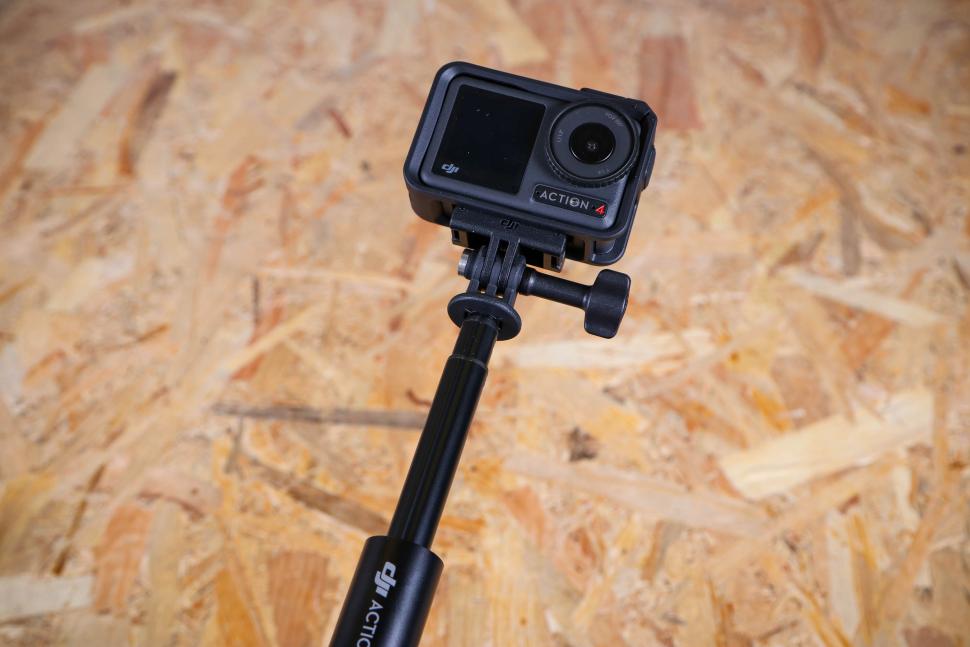
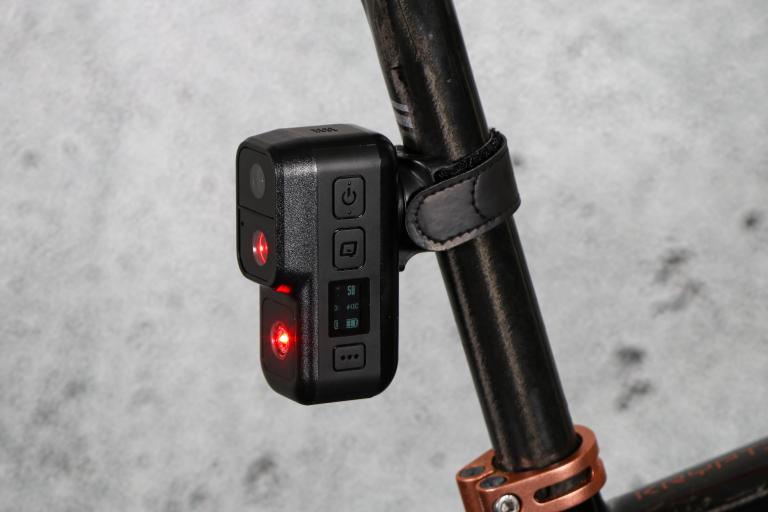



Add new comment
30 comments
It's good news for me! GoPro has binned GPS, which is essential for me. The Osmo has a bluetooth remote which is also the GPS, which will do fine if the Hero 7 Black packs up. I used to moan all the time about the unsupported obsolete GoPro app- it seems to have been behaving well over the last 18 months or so.
I recently explored the feature of adding bookmarks (highlights) in the DJI Mimo app while riding with my action camera. Initially, I knew about using the quick switch (QS) button to add bookmarks, but I was unsure how to access them in the app.
Contrary to my expectation, the bookmarks aren't directly visible in the LightCut or DJI Mimo editors. To view them in the Mimo app, ensure your camera is connected, open the gallery, select the video, tap the download icon, and then choose the "trimmed download" option. Keep in mind that if your bookmarks are spaced apart, you'll need to repeat this process for each one.
On the bright side, this feature allows you to selectively download only the portions of the video that you intend to use, rather than the entire footage.
In an iPad the option do download part of the video and see the bookmarks is no available at version 1.11.6.
Lord knows I'm no mathematician but isn't 1.7 bigger than 1.3?
It's a fraction with a decimal denominator. Bit weird, but that's how they do it for small camera sensors. https://en.m.wikipedia.org/wiki/Image_sensor_format
It's "1 over" the number, in the same way that 1/2 is bigger than 1/3.
It's 1 divided by 1.7 and 1 divided by 1.3. Sensor sizes are quoted that way for historic reasons, something to do with vacuum tubes(!?!).
Thanks all above - told you I was no mathematician!
So the battery is only good for 160mins?
That's what, roughly 30 mile ride at average pace in an urban environment allowing for junctions and traffic lights?
It's more of a short ride or record this fun bit type of camera than a record it all, dashcam type - albeit doing it well.
Type of usage /average length of ride / ability to recharge are definitely a consideration.
These arent really useful for roadies, more MTB'ers, commuters or multisports fans.
Personally I think these Camera's are a slave to the arbritary matchbox form factor. I'd be really interested in one thats double/triple the size with battery to match, but for a similar price. The mark up on the current gen models compared to the last gen ones shows what profit margin DJI and GoPro are making.
Increasing the form factor reduces their usability; more bulk and more chance of either damage to the camera, or to the operator.
I'm not the fastest of riders out there (don't even average 15mph and that's *with* an ebike). My 13 mile (each way) commute would potentially mean that I would have to charge this at least every day to ensure that my commute is captured (at least I can get days out the Fly6 Gen 3), and that would leave me feeling that I had to charge this while at work as well as at home ... and then be worried if I hadn't.
It's not the camera for me ... I want to brake my dependency on Cycliq products, but I guess we're a long way from there being suitable replacement.
It depends what you want an action cam for. The readers of this site, obsessed as they are with driver behaviour, will want a cycling dashcam. That's not really the sweet spot for the reviewed camera or its GoPro equivalent so look elsewhere.
Whereas if one wants high quality video showing the excitement and beauty of cycling or other sports, then this cam will be ideal.
Not for epic road rides though. Or even a basic 3hr plus 100km
It can be done, I have done it. You run external power to the camera. It's not as convenient as a plonking a single self-contained device on the handlebars but it's what you have to do. I'm not suggesting that one videos constantly for the duration, unless you're fixated on the dashcam thing, but frankly I like to make cycling look good and not an activity of constant danger.
Here's an edit of a 9 hour ride.
https://youtu.be/svLoNMUnGPs?si=Q3PRfzmsfmlo2X0t
It's hardly surprising that readers may consider this camera for dashcam use, is it?
Given that this is primarily a website for road-based cyclists and that the demonstration video is primarily road-based.
As for look elsewhere ... that's exactly what I was doing when I read this article; trying to find a replacement for my dependency on the (excellent) Cycliq cameras - as I'm sure a few other readers would have been.
There is no reason why a camera can't provide " high quality video showing the excitement and beauty of cycling " and be a dashcam at the same time - they are not mutually exclusive.
They kind of are. High quality video is energy intensive which limits battery life. Dashcams need long battery life. Different use cases take different cameras.
What someone should make is a small form factor camera with optional attachable battery packs - that would cover both uses quite well.
There is always the issue of space too, although based on the cheap actioncam I have, the batteries themselves tend to be quite small - maybe the size of an SD card.
A small form factor power bank that comprises of additional existing batteries - similar in operation to a battery grip for a DLSR for example - wouldn't be too difficult to find the space for.
I suppose that in an ideal world I'd be looking for a camera that can record high quality video footage with a low level of artifacts and high quality image stabilisation, embeds or sidecars GPS data and as a battery life able to cope with around 8 hours of recording.
In a really ideal world, it would be good if the camera could also capture other telemetry data such as HR, cadence, power, etc. .. maybe even provide navigation too although that would be pushing it.
Garmin - for example - already produce cameras that do most of this for the automotive market; surely there is a competive enough market out here for a cycling version?
That's a GoPro 11 Mini. Hopefully there will be GP12 mini along soon.
I can't see different battery packs for the 11 mini and the built-in battery isn't removeable though it does allow for charging whilst in use. I suppose you could duck tape an extra battery onto your handlebars/frame, but that's not quite what I had in mind.
It's what you have to do, though, and the GP11 does reward you with fantastic quality.
I don't have to do that at all, as I can just carry on using my Cycliqs, front and back.
I'm still waiting for some camera manufacturer to challenge Cycliq in performance/usability, but no-one else seems to be quite there yet. There's a few cheaper rip-offs of the rear light/camera,, but they don't have quite the same number plate capturing abilities from what I can tell.
The point I am patiently trying to explain is that a GoPro or this DJI is what to go for if you want high quality video to show, you know, fun? The drawback is lesser battery life. If you want dashcam functionality for all your close pass videos then it's cycliq where you get battery life but lesser video quality.
Yes, I understand that, but the point I am making is that perfectly acceptable video quality (not broadcast quality) can be achieved by many cheaper devices and the Cycliq cameras don't suffer on the quality front even though I expect you can get better with some of the GoPro models.
My proposal was that a semi-decent video body could be made with optional battery packs to suit different requirements. Maybe have the base model with 1 hour run-time and have clip-on batteries that could extend that to 2, 4 or 8 hours. It doesn't seem like a difficult thing to achieve, especially when you consider that your suggestion of duck taping battery packs to your bike can be a make-shift alternative. I'm just surprised that no manufacturer has spotted that gap in the market.
I believe insta360 briefly dabbled with this idea with their "boosted battery base" - although it appears to have been discontinued now.
That's a shame. I was intrigued by the Insta360, but there was at least one commenter on here who said that it wasn't great as a commuting cam, though I can't remember the reason. A 360 degree view would save on having to run a front and back camera.
You have to stick the 360 cam on top of your helmet for it to be able to see front and back, Jeremy Vine style. It's, um, an interesting look to be rocking.
I used to have a helmet mounted cam (can't remember the make, though it had a cool laser line for helping to get the video oriented correctly), but found it a bit annoying with the extra weight. Handlebar and seat-post mounting is much more comfortable.
I have the previous version, battery life is pretty bang on what is quoted. If the 4 is the same battery, they do a nice bundle that comes with 3 batteries and a charging box. As well as this the door where the USB-C is can be detached and you can power for longer with an external battery pack connected. Also you can actaully leave the three batteries in the charing box and use that as a powerbank.
In fact the GoPro hero 12 does not have built-in GPS. GoPro says few people use the feature and they get better battery life without it.